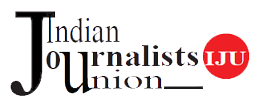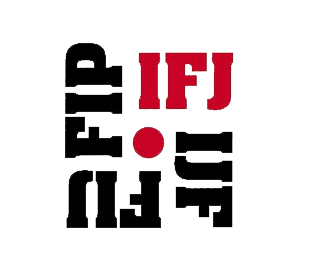Geetartha Pathak
The Supreme Court in 2015 said in a judgment on publishing photographs of politicians in government advertisement that personality cult is an anti thesis of democracy. The Apex court's observation came while it was hearing a petition of an NGo, Common Cause which was represented by senior advocate Prashant Bhushan. The Supreme Court first restricted publishing of photographs of ministers and governors except the Prime Minister, the President and the Chief Justice of India. Later on the apex court reviewed the judgment and allowed publication of photographs of all the union and state ministers including the Prime Minister, the chief ministers etc. The ground was that the if the photographs of the Prime Ministers is allowed to be published in the government advertisement then the same right should be available to his cabinet colleagues as the PM is the first among the equals. The Attorney General argued then that other ministers and the chief ministers were also answerable to public and they could not remain faceless.
After two years of passing of the reviewed judgment by the apex court we could not see the other faces of the cabinet colleagues of Prime Minister Narendra Modi in the media advertisements issued by the government. In the advertisements of Swachha Bharat Mission (SBM), Pradhan Mantri ujjwala Yojana (PMuY) we can only see the ubiquitous face of the Prime Minister Narendra Modi. SBM contains two sub missions - Swachh Bharat Abhiyan (Gramin) which operates under the ministry of Drinking Water & Sanitation and Swachh Bharat Abhiyan (urban) which operates under the Ministry of Housing and urban Affairs.
The Drinking Water and Sanitation Minister is Ms Uma Bharati and the Housing and Urban Affairs Minister is Hardeep Singh Puri who is holding independent charge of the ministry. Have we ever seen the photographs of these two ministers in the SBM advertisements? Similarly we hardly see the face of Dharmendra Pradhan who is union Petroleum Minister in the advertisements of PMuY. We can predominantly see the Prime Minister Narendra Modi in the state controlled and state friendly media outlets. We can see Prime Minister Modi in his Man ki Bath discourse in TV and radio channels.
We have seen elsewhere in the world that authoritarian governments employ state-run and state-friendly media to create and control domestic political narratives. Designed to appeal to wide audiences with entertainment content, these media outlets make effective weapons for tarnishing images of political opponents while discrediting protest movements at home and abroad as harbinger of chaos. The presidents of Ecuador and Venezuela routinely appear on their own lengthy talk shows or on mandatory broadcasts to denounce political opposition. Russian President Vladimir Putin is similarly famous for his hours-long telethons. on the other hand resource constraints, legal and mental pressure and other restrictions often keep dissenting voices out of the news.
The personality cult as the apex court of India describes as anti thesis of democracy, is very prominent in the functioning of the BJP government. If we consider what the Supreme Court says on the personality cult, we may well say that the shadow of authoritarianism is looming over the country.
Authoritarian regimes increase the effectiveness of state and state friendly media by actively limiting free information and critical viewpoints. By intimidating, blackmailing, assaulting, arresting, torturing, and killing opposition journalists, authoritarian governments try to silence dissenting voices and encourage self-censorship among those who still remain. Assassination of Gauri Lankesh, a critical voice in journalism vindicates such opinion on authoritarian regimes. These regimes also use legal measures to silence independent journalists, including Saudi "anti-terror" legislation and recent Chinese regulations mandating jail term for spreading online "rumors." The aborted attempt of the Information and Broadcasting Ministry of India to cancel accreditation and jail term for spreading fake news can be placed in the same line.
Authoritarian regimes apply similar tactics to restrict online spaces. The "Great Firewall of China" is perhaps the most recognized example of online censorship, but other forms of intimidation and control include requiring bloggers to register offline identities, limiting Internet access during politically-sensitive periods, undermining censorship circumvention technologies, and pressuring Internet service providers and social media platforms to remove content that is critical of the regime.
According to internetshutdowns.in, a website that tracks when the Internet is blocked off in India, authorities shut down the internet 69 times in 2017. That is more than twice the number of such instances the previous year. Facebook has been criticized by social media users in India for purportedly blocking and putting under scrutiny accounts and pages that shared posts critical of the government, the ruling BJP and Right Wing groups. on September 26, 2017 Facebook blocked the account of journalist Mohammad Anas for 30 days after he shared a photograph of a trader's cash memo with a message at the bottom that read: "Kamal ka phool hamari bhool." It was our mistake to vote for the lotus (the electoral symbol of BJP).
In democracies, open media are the means of support of politics. In authoritarian regimes, state-controlled and state friendly media seek to isolate activists from society at large. The state controlled and state friendly media try to discredit in the public's mind any notion of a political alternative. Unfortunately in India most of the mainstream media barring a few are potentially state friendly and ready to indulge in paid news. The recent sting operation by the Cobra Post has revealed that out of 30 media outlets it contacted 28 are willing to propagate the Hindutva agenda before the run up to the 2019 Lok Sabha elections in lieu of money.
Cobra Post claims that the journalist of the media outlet who posed as Acharya Atal has even talked to the top officials of the media companies who readily agreed to work for the BJP. People must be aware of the danger of media manipulation for moulding public opinion before the 2019 parliamentary elections. To fight the menace strengthening of alternative peoples friendly media is need of the hour.



